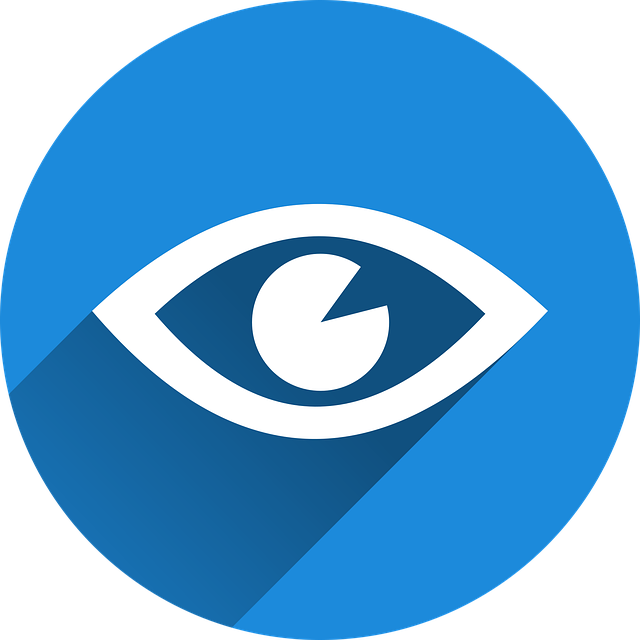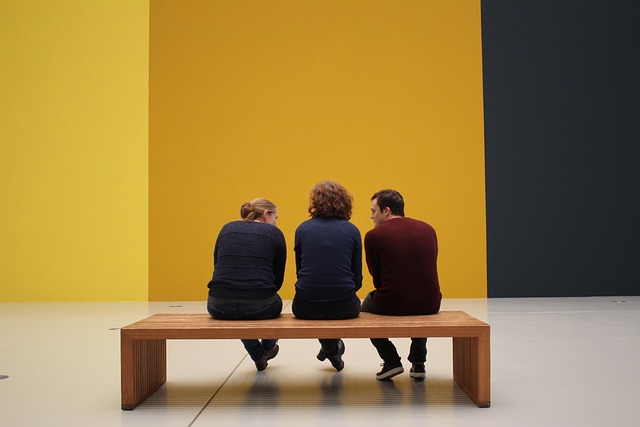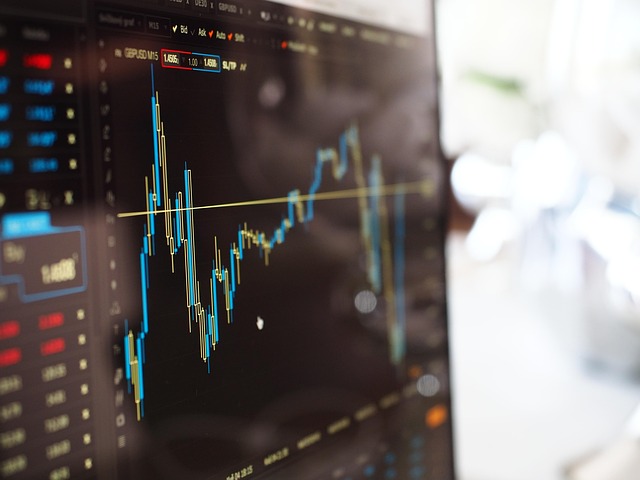How to See Two Charts in TradingView: A Complete Dual-Chart Setup Guide
Author: Jameson Richman Expert
Published On: 2025-10-30
Prepared by Jameson Richman and our team of experts with over a decade of experience in cryptocurrency and digital asset analysis. Learn more about us.
If you want to learn how to see two charts in TradingView quickly and reliably, this comprehensive guide walks you step‑by‑step through layouts, syncing, performance tips, mobile limitations, and advanced workflows (including Pine Script and pop‑out windows). You’ll get actionable instructions, troubleshooting advice, and examples for comparing instruments, timeframes, and exchanges—so you can trade faster and analyze more effectively.

Why view two charts at once?
Viewing two charts simultaneously lets traders compare instruments, monitor spot vs. futures, track a primary chart and a confirmation timeframe, or keep an eye on correlation pairs (e.g., BTC spot vs BTC futures or XRP vs XLM). Dual‑chart layouts speed decision making by removing the need to toggle between tabs and enable visual correlation, which is essential for intraday traders and swing traders alike.
Overview of what you’ll learn
- How to enable two charts in TradingView (desktop/web and app basics)
- How to synchronize symbols, timeframes, crosshairs, and drawings
- Best practices for comparing exchanges and instrument types
- Performance and plan considerations (which TradingView plan supports multiple charts)
- Advanced tips: detach/pop‑out charts, Pine Script syncing, and layout management
- Troubleshooting common issues and mobile limitations
Quick start: How to see two charts in TradingView (step-by-step)
Follow these steps to set up two charts side-by-side in TradingView on desktop/web:
- Open TradingView and sign in. If you don’t have an account, create one at TradingView’s upgrade or account pages to learn which plan supports multi‑chart layouts (see the official TradingView plans page for details).
- Open a chart (Chart view) from the main dashboard or watchlist.
- Click the “Select Layout” icon on the top toolbar (usually looks like split rectangles or grid). Choose a two‑chart layout—either vertical or horizontal.
- Use the chart header “link” icon on each chart to group them. Click the small colored link/chain (or “Link to” control) and choose the same color for both charts to link them; linking enables synchronized symbol changes if you configure it below.
- Set synchronization options: From the layout or chart settings, enable what you want to sync—Symbol, Interval (timeframe), Crosshair, or Drawings. You can sync only some elements (for example, sync crosshair and interval but keep symbols independent).
- Load different symbols into each pane (e.g., BTCUSD on the left and BTCUSD:PERP on the right or BTCUSD and ETHUSD). If the charts are linked, changing the symbol in one can automatically update the other (if Symbol sync is enabled).
- Save your layout with Save → Save Layout so you can re-open it later quickly.
These basic steps let you view and control two charts at once. If you need additional detail on multi‑chart best practices, see this Pro tips article about using multiple charts effectively.
Pro Tips: How to Use Multiple Charts in TradingView Effectively

Understanding TradingView plans and limits
Not all TradingView plans support the same number of charts per layout. Historically:
- Free: single chart per layout
- Pro: up to 2 charts per layout
- Pro+: up to 4 charts per layout
- Premium: up to 8 charts per layout
Plan features and limits change over time—check TradingView’s official plans page to confirm the latest limits and decide which plan fits your multi‑chart workflow.
Compare TradingView plans (official)
How linking and synchronization work (in detail)
Linking is the key to making dual charts useful rather than two static windows. Use the linking and synchronization features to control how the two charts behave when you interact with one.
Common sync options
- Symbol Sync — When enabled, changing the symbol on one chart updates the other chart to the same symbol (handy for viewing the same instrument across timeframes or exchanges).
- Interval/Timeframe Sync — Keeps the chart timeframes matched (e.g., 1H on both charts), which is useful when you want to compare the same timeframe across instruments.
- Crosshair Sync — Syncs the crosshair so that moving your cursor on one pane shows the same timestamp on the other, making it easier to compare simultaneous price action.
- Drawings/Tools Sync — Shares your trendlines and annotations across linked charts (helpful if you analyze the same setup across multiple data sources).
To enable or adjust these, look for the link/chain icon in each pane’s header or the layout menu. Assign the same color link to both charts to group them and then open the linking configuration to choose which elements to sync.
Practical examples: Two charts you should try
Here are common and practical pairings that give insight into market behavior when shown side‑by‑side:
- Different timeframes, same symbol — Use 15‑minute on left and 4‑hour on right to get micro versus macro perspectives. This is useful for intraday scalpers who want context from higher timeframes.
- Spot vs. Futures — Place spot (e.g., BTCUSD on Binance) on the left and perpetual futures (BTCUSD-PERP) on the right to spot funding‑driven divergence and basis.
- Two correlated assets — Compare BTCUSD and ETHUSD or XRPUSD and a correlated altcoin to see divergence or confirmation signals. (For example, read an XRP outlook to pair fundamental analysis with visual comparisons.) XRP Price Forecast and Market Outlook
- Exchange comparison — Compare the same pair across exchanges (Binance vs Bitfinex vs Bybit) to check for arbitrage or price discrepancies. Helpful if you trade across multiple venues—open accounts at major exchanges to execute quickly: Binance, MEXC, Bitget, Bybit.

Compare vs. overlay: when to use each
TradingView offers both split layouts and overlay/compare features:
- Split layout (two charts): Best when you want independent scaling or very different chart settings and indicators on each pane.
- Compare/Overlay: Adds another symbol directly on top of your primary chart (useful for correlation and ratio analysis). For example, overlay BTC/USD with BTC/USDT from another exchange to compare price action in one pane.
Advanced tips: scaling, indicators, and Pine Script
Lock scale and avoid misleading comparisons
If you compare two instruments with very different price ranges, use the “Lock Price Scale” and independent axis options to prevent misleading visual distortions. Right‑click the price axis to access scaling options like “Lock Scale” or “Auto”.
Apply different indicators per pane
When using two charts, keep indicator complexity in mind—each pane’s indicators consume browser resources. Place heavier or custom Pine Script indicators on one pane and lighter indicators on the second to maintain performance.
Use Pine Script to link calculations across panes
If you need both panes to share custom indicators or calculations, write Pine Script that outputs values and publish it to both charts. You can also create a script that plots ratios (e.g., BTC/ETH) so one pane computes while the other displays raw prices.
Pop‑out charts and multiple windows
Want dedicated windows on separate monitors? Use TradingView’s pop‑out feature (Chart → Pop out) to detach a chart into a new browser window or use the TradingView desktop app. This lets you move one chart to a secondary monitor and keep the other on your primary screen.

Mobile and tablet notes
The TradingView mobile app is optimized for single‑chart interactions and generally does not support the same multi‑pane layouts as the desktop/web version. You can use compare/overlay features on mobile, but for dual independent panes, use desktop or browser windows. If you must monitor multiple charts on the go, open multiple browser tabs or use a tablet with split‑screen apps.
Troubleshooting: charts not syncing or missing options
- Charts not syncing — Verify both charts are assigned the same link color and that the specific sync option (Symbol, Interval, Crosshair) is enabled in the linking settings.
- Layout options disabled — If you don’t see multi‑chart layout selections, you may be on a plan that doesn’t include multiple charts. Upgrade or check TradingView’s plan comparison page.
- Performance issues — Reduce the number of indicators, disable real‑time data for non‑critical symbols, or limit layouts to 2 charts. Consider upgrading your plan or using the desktop app for better memory management.
- Drawings not synced — Ensure Drawings sync is enabled; remember some annotations are chart‑specific and may not transfer if they’re based on different price scales.
Workflow examples and templates
Here are practical layout templates you can save and reuse:
Template A — Intraday scalper
- Left: 1‑minute BTC chart (order flow indicators)
- Right: 30‑minute BTC chart (trend and key levels)
- Sync: Interval OFF, Crosshair ON (to align timestamps), Drawings OFF
Template B — Futures arbitrage monitor
- Left: BTCUSD on Binance (spot)
- Right: BTCUSD perpetual on Bybit
- Sync: Interval ON, Symbol OFF (use separate symbols), Crosshair ON
- Notes: Watch funding rates and spreads; open exchange accounts for execution: Binance, Bybit.
Template C — Correlation research
- Left: BTCUSD
- Right: ETHUSD
- Sync: Interval ON, Crosshair ON, Drawings ON
- Use overlay to plot BTC/ETH ratio in a lower pane or as a separate chart.

Performance optimization tips
- Use fewer indicators per pane and avoid heavy scripts when using multiple charts.
- Prefer the TradingView desktop app for multi‑monitor workflows to reduce browser memory overhead.
- Use one active real‑time exchange feed per pane if latency is an issue for non‑critical symbols.
- Save each layout and clear unused layouts periodically to keep your workspace organized.
Real world trading examples
Example 1: You’re tracking XRP and want to combine technical analysis with forecast/outlook data. Put XRPUSD on the left and a related altcoin on the right to identify divergence. For fundamental reads like long‑term forecasts and potential catalysts, consult reputable market analysis resources, for instance this XRP forecast article that summarizes broader market context: XRP Price Forecast and Market Outlook.
Example 2: If you’re concerned about Ethereum transaction queue times and want to watch short‑term price reaction to network congestion, open ETHUSD on one pane and an on‑chain metric overlay (or a script that tracks queue length) on the other. You can read more about ETH queue wait time causes and fixes here for deeper context: Understanding ETH Queue Wait Time.
Using multiple charts for algorithmic or AI trading
When working with automated strategies or AI trading bots, multiple charts can be invaluable for monitoring real‑time performance across instruments. If you’re researching AI trading bots and platforms, reference guides like the Best Crypto AI Trading Bot Platform Guide to find tools that pair well with multi‑monitor manual oversight: Best Crypto AI Trading Bot Platform Guide 2025.

Saving, naming, and sharing layouts
Once you’ve configured two charts to your liking, save the layout with a meaningful name. You can publish or share layouts (and snapshots) with collaborators or on social platforms. Use the layout save menu (usually top‑right) and enable auto‑save if you want your workspace preserved between sessions.
High‑authority resources and further reading
- TradingView on Wikipedia — background and platform history
- Technical analysis basics (Wikipedia) — foundational concepts behind chart analysis
- TradingView official plans and features — verify current multi‑chart capabilities and plan limitations
Checklist: Before you start trading with two charts
- Confirm your TradingView plan supports 2+ charts
- Decide which elements to sync (Symbol, Interval, Crosshair, Drawings)
- Set up layout and assign link color to both panes
- Test crosshair and timeframe sync across different timestamps
- Save layout and test pop‑out windows on a second monitor
- Backup important Pine Scripts or indicators used across charts

Final tips and best practices
To make the most of a two‑chart setup in TradingView:
- Use contrasting colors for link groups so you can visually confirm which charts are linked.
- Turn off symbol sync when you’re comparing different instruments (unless you want instant symbol switching across panes).
- Keep one chart for micro timing and the other for macro context—this reduces overtrading driven by short‑term noise.
- Use multiple windows or the desktop app for multi‑monitor setups to reduce browser clutter and CPU load.
- Regularly review and declutter saved layouts so only active strategies remain.
Conclusion
Knowing how to see two charts in TradingView unlocks a powerful way to compare instruments, monitor multiple markets, and confirm setups faster. With the right layout, synchronization settings, and performance optimizations, dual charts become an indispensable part of a trader’s toolkit. Whether you’re comparing spot vs futures, monitoring correlation, or supervising automated strategies, the steps and tips above will help you build reliable, repeatable multi‑chart workflows.
For more advanced multi‑chart techniques and pro tips, check this detailed guide on using multiple charts in TradingView effectively: Pro Tips: How to Use Multiple Charts in TradingView Effectively.
Additional useful reads: a long‑term market outlook for XRP: XRP Price Forecast 2025–2028, ETH queue time insights: Understanding ETH Queue Wait Time, and an AI trading bot platform guide to pair automated systems with multi‑chart monitoring: Best Crypto AI Trading Bot Platform Guide 2025.
Ready to deploy? Open your TradingView, pick a two‑chart layout, link the panes, and start experimenting with the templates above. If you need help configuring a specific setup (e.g., spot vs perpetual with spread calculations), tell me the instruments and timeframes you use and I’ll provide a step‑by‑step layout tailored to your strategy.